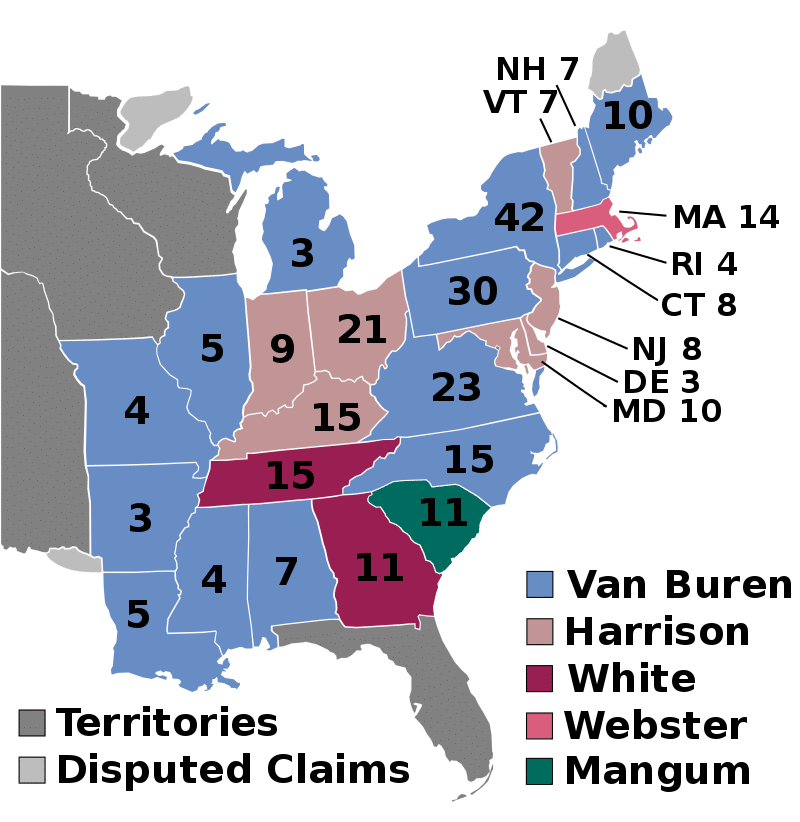The Presidential Election of 1836 was the first election in 12 years that Andrew Jackson was not on the ticket. Instead, his protege, Martin Van Buren, was at the top of the ticket. He planned to continue the policies of Andrew Jackson, which made him a popular candidate with the public.

The National Republican Party, Anti-Masonic Party, and the Nullifiers began to create a new party, the Whigs. The Whigs nominated 4 different candidates to run in an attempt to send the vote to Congress.
The Candidates were as follows:
- Democratic-Republicans: Martin Van Buren and Vice President Richard M. Johnson
- Whig: General William Henry Harrison and Vice President Francis Granger
- Whig: Hugh L. White and Vice President John Tyler
- Whig: Daniel Webster and Vice President Francis Granger
- Whig: Willie P. Mangum and Vice President John Tyler
Presidential Election of 1832: Platforms
Democratic: The Democratic party under Martin Van Buren planned to carry on the same policies as Andrew Jackson. Van Buren was a master politician and political strategist who knew that the easiest way to win the election was to appeal to the people.
Whigs: The Whigs had four different platforms, but their main platform was to beat the Democratic Canditate. Their plan was to regionalize their candidates and hopefully send the election to the House. Regionalizing the candidates would allow them to peel enough electoral votes from Van Buren that would allow them to steal the election.
Presidential Election of 1832: Outcome
The Whig strategy would ultimately fail. They were able to hold Van Buren's delegate count below Jackson's mark, but that still was not enough.
However, the candidate from the Whigs that would emerge was William Henry Harrison. He also appealed to the people and did not have political experience. He would rise in popularity and, along with a catchy slogan, become a much serious threat in the following election.
Martin Van Buren became President. Although Andrew Jackson was popular, he had left behind an economic mess. This would set the stage for the rise of a new party to take over the White House.
